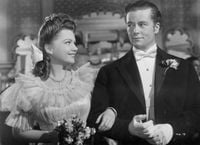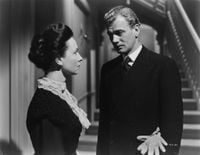On September 5, 2025, the world of cinema was shaken by a bold announcement: Showrunner, a streaming platform that touts itself as the “Netflix of AI,” revealed plans to attempt the impossible—recreate the legendary lost 43 minutes of Orson Welles’ 1942 classic, The Magnificent Ambersons, using artificial intelligence. For decades, cinephiles and scholars have mourned the missing footage, often described as the “holy grail of cinema.” Now, after more than 80 years of speculation and disappointment, a new chapter is set to unfold—one powered by the latest advances in generative AI and a healthy dose of ambition.
The original saga of The Magnificent Ambersons is itself a tale of artistry and heartbreak. Shot in 1941 at RKO’s Gower Street Studios in Los Angeles, the film was intended as Welles’ triumphant follow-up to Citizen Kane. The initial cut ran 131 minutes, but after a disastrous test screening, RKO executives took drastic action: they slashed the runtime to just 88 minutes, tacked on a jarringly upbeat ending, and—most tragically—destroyed nearly a third of the negatives, melting them down for their silver nitrate. “They destroyed Ambersons and it destroyed me,” Welles reportedly lamented, a sentiment that’s echoed through generations of film lovers, according to Paste Magazine.
Despite its mutilation, the shortened version of The Magnificent Ambersons was still lauded by critics. The Hollywood Reporter praised its “magnificent artistic merits,” even as it acknowledged the difficulty of summarizing the truncated film. But for decades, the question has lingered: what was lost in those 43 minutes? Efforts to recover the missing footage—like Turner Classic Movies’ fabled trip to Brazil—have all ended in frustration, leaving only tantalizing glimpses in production stills, scripts, and storyboards.
Enter Showrunner, a company at the forefront of AI-generated entertainment. Backed by Amazon and helmed by CEO Edward Saatchi, Showrunner has made waves in recent years by allowing users to create their own AI-generated episodes of popular shows—sometimes courting controversy, as with their unauthorized South Park episodes. But the Ambersons project is something different: a noncommercial, academic endeavor aimed at demonstrating how AI might contribute positively to the art of storytelling.
“Year by year, the technology is getting closer to prompting entire films with AI,” Saatchi explained to The Hollywood Reporter. “Today, AI can’t sustain a story beyond one short episode, but our technology is a step toward a scary, strange future of generative storytelling.” The company’s latest model, FILM-1, is designed to generate long, complex narratives—ultimately building toward feature-length, live-action films. For Saatchi, it’s only fitting to train this technology on the works of a master like Welles. “For FILM-1, which will unlock longer-form live-action stories on the Showrunner platform, we’re starting with Orson Welles because he is the greatest storyteller of the last 200 years,” he told IndieWire. “So many people are rightly skeptical of AI’s impact on cinema—but we hope that this gives people a sense of a positive contribution that AI can make for storytelling.”
The technical approach to resurrecting the lost Ambersons footage is as intricate as it is innovative. Showrunner’s plan involves a fusion of AI and traditional filmmaking techniques. The team will use AI keyframe generation for all major shots, employing model motion and trajectory control to mimic Welles’ famously fluid camera movements. Archival set photos will help generate the spatial settings, while some sequences will be filmed with live actors. To preserve the likenesses of the original cast, advanced face and pose transfer techniques—along with AI-generated voices—will be deployed.
Central to the project is Brian Rose, a filmmaker and historian who has devoted the past five years to reconstructing the missing scenes. Rose has painstakingly rebuilt physical sets in 3D, mapped out camera movements using storyboards and production stills, and recreated some 30,000 missing frames. “There was, for example, a four-minute-long, unbroken moving camera shot whose loss is a tragedy,” Rose said in a statement. “The camera moves from one end of a ballroom and then back up the other end while you have about a dozen different characters walk in and out of frame, and crisscrossing subplots. It was really ahead of its time. Yet all but about the last 50 seconds of the shot was cut.”
To help realize the ambitious visual effects, Showrunner has enlisted Tom Clive, a VFX expert known for his work on face-swapping and de-aging, and most recently as an AI and digital artist on Robert Zemeckis’ Here. Clive’s expertise will be crucial in blending live-action footage with AI-driven enhancements, ensuring that the reconstructed scenes feel as authentic as possible.
Yet, despite the fanfare, the project is not without its limitations—and its detractors. Showrunner has not obtained the commercial rights to The Magnificent Ambersons from Warner Bros. Discovery or Concord, the latter of which recently acquired the RKO film library. As such, the reconstructed footage will not be released in theaters or for profit. “The goal isn’t to commercialize the 43 minutes, but to see them exist in the world after 80 years of people asking ‘might this have been the best film ever made in its original form?’” Saatchi clarified to The Hollywood Reporter. If the rights holders ever see a commercial opportunity, “more power to them.” For now, the effort is strictly academic, intended to push the boundaries of what AI can achieve in service of cinematic history.
Of course, not everyone is convinced that AI is the answer to film’s greatest mysteries. Cinephiles who have spent a lifetime searching for the lost Ambersons footage may bristle at the idea of a machine-generated facsimile. Even Saatchi acknowledges the controversy, invoking the film’s own themes of technological upheaval: “Ambersons is about a family dynasty that failed to adapt to the rise of new technology and the invention of the automobile at the dawn of the 20th century,” he told IndieWire. “Perhaps in its reconstructed form, we will all say, in the words of an audience card at the disastrous preview in Pomona that ended the film’s chances: ‘I think that this is the best picture that I have ever seen.’”
As Showrunner embarks on its two-year quest to bring Welles’ vision back to life, the project stands as both a tribute to cinematic genius and a test case for the future of AI in the arts. Whether the reconstructed Ambersons will satisfy purists or ignite new debates remains to be seen. But one thing is certain: after decades of longing, the lost masterpiece is finally getting another chance to be seen—albeit through the lens of a very different kind of storyteller.
The intersection of technology and tradition has rarely been more poignant, or more fraught with possibility. As the world waits for the results, the eternal question lingers: Can AI truly restore what was lost, or will it simply create something new?





